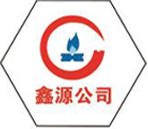
Aug . 13, 2024 17:16
Back to list
Optimizing Heat Exchange Efficiency in Natural Gas Applications for Improved Energy Performance
The Heat Exchanger for Natural Gas Enhancing Efficiency and Safety
Heat exchangers play a vital role in various industrial applications, including the processing of natural gas. As the demand for cleaner energy sources grows, efficient heat exchange technologies become increasingly significant for the natural gas industry. This article explores the importance, working principles, types, and the advancements in heat exchangers specifically tailored for natural gas applications.
Understanding Heat Exchangers
A heat exchanger is a device designed to transfer heat between two or more fluids while keeping them separated. The fluids could be gases, liquids, or a combination thereof. In the context of natural gas, heat exchangers are crucial for processes such as gas compression, liquefaction, and even during transportation and storage. By optimizing thermal efficiency, heat exchangers contribute to energy savings, reduce operational costs, and minimize environmental impact.
Working Principles
Heat exchangers operate on the principle of thermal conduction and convection. The basic mechanism involves one fluid absorbing heat from another fluid without mixing them. For natural gas, this often occurs in facilities where gas needs to be cooled, such as in gas processing plants or LNG (Liquefied Natural Gas) terminals. The efficiency of heat exchangers directly impacts the overall energy efficiency of these processes, making it essential to design them appropriately.
Types of Heat Exchangers
.
1. Shell and Tube Heat Exchangers Consisting of a series of tubes, this type allows one fluid to flow through the tubes while another flows over the tubes, facilitating heat transfer. They are widely used in natural gas processing due to their robustness and high heat exchange capacity.
المبادل الحراري للغاز الطبيعي

2. Plate Heat Exchangers These consist of thin, corrugated plates stacked together. They provide a large surface area for heat exchange in a compact volume, making them ideal for applications requiring minimal space without compromising efficiency.
3. Air-Cooled Heat Exchangers Utilizing ambient air for cooling, these systems are especially useful in remote locations where water is scarce. They help in cooling natural gas during processing and compression stages.
4. Double-Pipe Heat Exchangers Simplistic in design, these consist of one pipe inside another. They are easy to maintain but are generally used for smaller-scale applications due to limited efficiency compared to shell and tube designs.
Advancements in Technology
Recent advancements in heat exchanger technology have led to improved designs that enhance efficiency and sustainability. Innovations in materials, such as the use of titanium and advanced composites, offer better resistance to corrosion and higher thermal conductivity. Moreover, the development of smart heat exchangers equipped with sensors and automation technologies can optimize operation by adjusting to varying load conditions in real-time.
Integrating heat exchangers with renewable energy systems is another area of growth. For instance, hybrid systems that combine solar or geothermal energy with traditional gas processing can further enhance the sustainability of natural gas operations.
Conclusion
Heat exchangers are indispensable in the natural gas industry, ensuring efficient thermal management throughout processing and transportation. With advancements in technology, the future looks promising, as these systems continue to evolve towards improved efficiency and environmental compatibility. As the global community shifts towards sustainable energy practices, investing in state-of-the-art heat exchangers becomes crucial for meeting the demands of modern natural gas applications while minimizing ecological impact.
Latest news
-
Safety Valve Spring-Loaded Design Overpressure ProtectionNewsJul.25,2025
-
Precision Voltage Regulator AC5 Accuracy Grade PerformanceNewsJul.25,2025
-
Natural Gas Pressure Regulating Skid Industrial Pipeline ApplicationsNewsJul.25,2025
-
Natural Gas Filter Stainless Steel Mesh Element DesignNewsJul.25,2025
-
Gas Pressure Regulator Valve Direct-Acting Spring-Loaded DesignNewsJul.25,2025
-
Decompression Equipment Multi-Stage Heat Exchange System DesignNewsJul.25,2025

